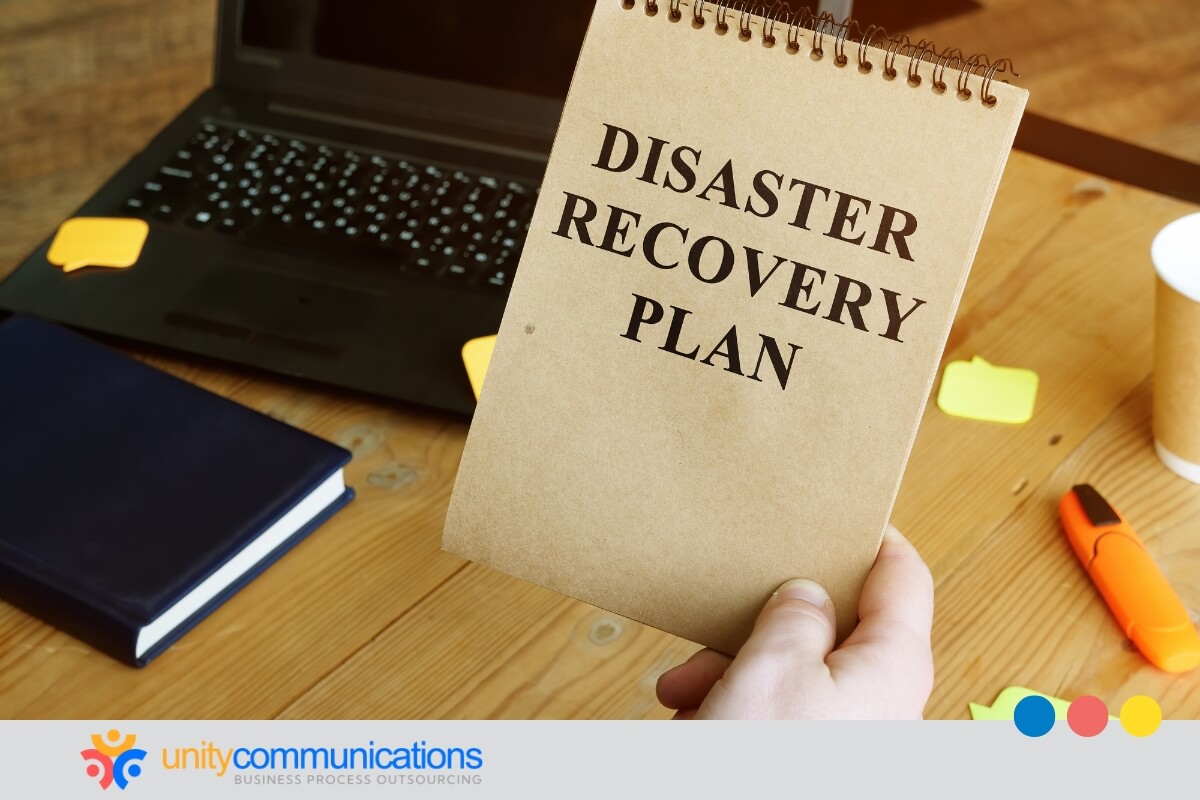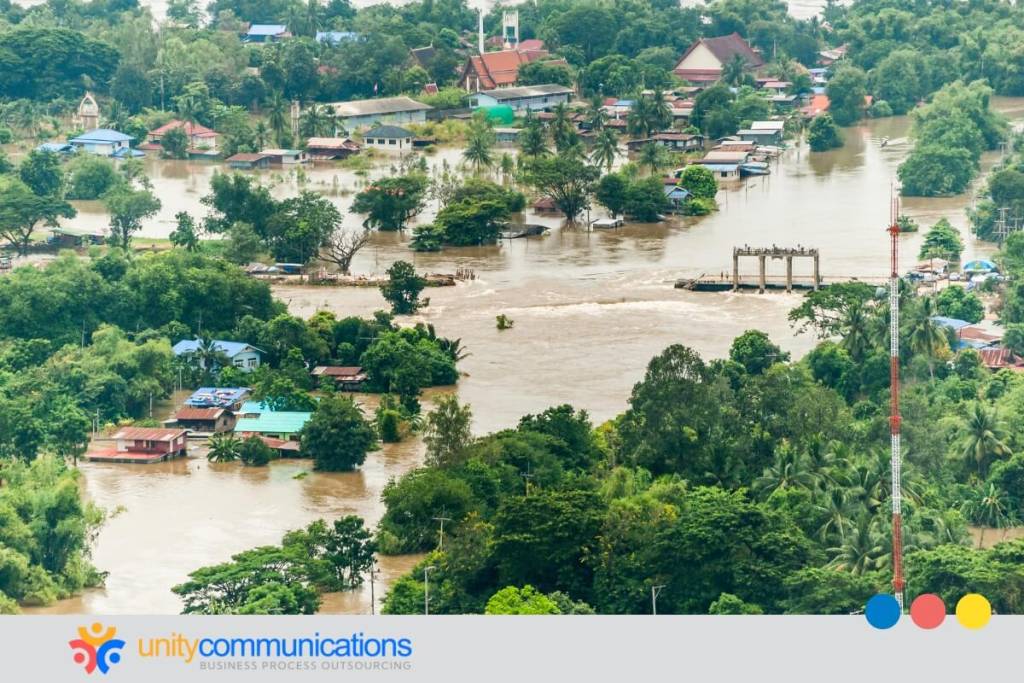Table of Contents
Outsourcing has emerged as a strategic solution for organizations seeking to streamline operations and enhance efficiency. Studies show that 82% of businesses improved their processes after engaging in the practice.
This feature makes business process outsourcing (BPO) an invaluable strategy in disaster relief, particularly flood emergencies. Outsourcing teams can help optimize disaster response times, improve communication, and allocate resources effectively.
If you want to learn more about BPO in flood relief operations, this article is for you. It explores third-party companies’ solutions, from disaster preparedness to long-term recovery.
Understanding the concept of outsourcing

To better understand how outsourcing services can benefit flood relief operations, it’s best to answer the question: What is BPO?
BPO is the practice of subcontracting specific tasks or processes to external teams. It means leveraging third-party resources for disaster relief organizations to manage disaster response and recovery efforts effectively.
Here are some examples of roles to outsource when partnering with a BPO team for flood relief operations:
- Call center services (e.g., handling incoming calls from affected individuals, emergency services, and other stakeholders)
- Data entry and management (e.g., collecting, processing, and analyzing data related to flood damage, resource allocation, and recovery efforts)
- Document management (e.g., organizing and managing documents, such as damage assessments, claims, and financial records)
- Supply chain management (e.g., coordinating the procurement, distribution, and tracking of essential supplies and equipment)
- Financial management (e.g., handling monetary transactions, including processing claims, managing budgets, and auditing expenses)
- Volunteer coordination (e.g., recruiting, organizing, and managing volunteers to support relief efforts)
- Community engagement (e.g., facilitating communication and collaboration among government agencies, non-government organizations, and affected communities)
- Grant administration (e.g., managing grants and other financial aid programs per eligibility criteria to support long-term recovery efforts)
- Disaster recovery planning (e.g., developing and implementing disaster recovery plans, including risk assessments and business continuity planning)
How BPO services can help flood relief operations

Outsourcing provides access to specialized expertise and advanced technologies, making it widespread across industries. According to Statista, the global BPO market will reach $5.55 billion in 2024 and grow to $6.48 billion by 2029.
But how exactly do BPO services benefit flood relief operations? Here are the prominent solutions they offer:
Enhancing communication: A vital lifeline
Effective communication is essential for coordinating relief efforts and disseminating information. BPO agents can enhance communication by coordinating with relevant stakeholders, such as emergency respondents, the Federal Emergency Management Agency (FEMA), and the public.
Here’s how third-party teams can help improve communications during flood emergencies:
- Call center services: BPO providers can establish and manage call centers to handle incoming calls from affected individuals, emergency services, and other stakeholders.
- SMS and email alerts: BPO teams can utilize SMS and email platforms to disseminate important information, such as flood evacuation notices, emergency alerts, resource availability, and updates on relief operations.
- Social media monitoring: BPO providers can monitor social media platforms to identify and address emerging issues or concerns related to the flood.
Optimizing disaster response times: The BPO advantage
Rapid response is critical in the immediate aftermath of a flood to save lives and minimize property damage. BPO teams can streamline response times by standardizing the processes involved in flood response and relief operations.
Deloitte’s 2023 Global Shared Services and Outsourcing Survey proves this. In the report, 82% of businesses claimed they enhanced process efficiencies after outsourcing.
Here are other ways they can help you optimize response times:
- 24/7 operations: BPO teams can provide round-the-clock monitoring and support, promptly disseminate critical information, and address requests during flood relief operations. This keeps a sense of urgency in operations, allowing immediate response and problem resolution.
- Remote access: External teams can work remotely, enabling them to continue operations even in areas affected by flooding. This ensures continued support, reduced risks, and increased flexibility.
- Rapid scalability: BPO providers can quickly scale up their operations in a flood emergency to meet the increased demand for call center support and data processing services. They have flexible staffing models and scalable technology infrastructure.
Allocating resources efficiently: A strategic approach
The impacts of floods can leave communities devastated for months, requiring continuous aid. For instance, in January 2023, the U.S. pledged $100 million worth of recovery support to Pakistan for floods in 2022. This could drain resources in the long run, underscoring the importance of effective resource allocation.
Fortunately, BPO teams’ standardized processes help optimize resource allocation in flood relief operations. They can help you maximize the impact of relief efforts and ensure aid reaches those who need it most.
Here are a few ways they can help you achieve this:
- Data analysis: This involves collecting, cleaning, validating, analyzing, and visualizing data from various sources, including government agencies and local communities. The insights identify areas of greatest need and optimize resource allocation.
- Supply chain management: This involves identifying and sourcing necessary supplies and equipment, such as food, water, shelter, and medical supplies. It also includes availability tracking, transportation coordination, and supply distribution management.
- Volunteer coordination: BPO teams can coordinate volunteer efforts for flood relief operations, from recruitment, training, task assignment, and staff management. This helps match individuals with appropriate tasks and ensures efficient utilization of human resources.
Managing disaster recovery plans: A proactive approach
Disaster recovery planning minimizes the long-term impacts of floods and ensures that organizations and communities can bounce back quickly. BPO services can proactively manage disaster recovery plans through various solutions.
One of these is plan development. This involves identifying potential risks, such as areas prone to flooding, historical flood patterns, and climate change impacts. Other vital functions include developing mitigation strategies, emergency response plans, and recovery plans.
BPO teams can also conduct risk assessments as part of flood relief operations. They can identify potential flood hazards, such as heavy rainfall, rising sea levels, and levee failures. They might also evaluate an area’s susceptibility to identified hazards and predict the potential consequences of flooding.
Business continuity planning is also part of the team’s responsibility. BPO providers can help business owners with the following strategies:
- Identify essential functions that must continue during and after a flood.
- Create alternative plans for carrying out critical functions during a disruption.
- Develop strategies for restoring business operations after a flood, including data recovery, equipment replacement, and supply chain management.
- Regularly test the business continuity plan and update it as needed to reflect organizational or risk environment changes.
Disaster recovery support can be significantly beneficial for small businesses affected by floods.
Supporting long-term recovery: A sustainable solution
Long-term flood recovery can be challenging, requiring sustained support and resources. BPO providers can support long-term flood recovery by facilitating the following efforts in relief operations:
- Community engagement (e.g., community outreach for housing assistance, mental health support, job training programs, community meetings, and social support)
- Grant administration (e.g., application processing, disbursement, monitoring, and reporting)
- Economic development (e.g., business development support for affected small businesses and entrepreneurs, job creation, infrastructure development, and community development)
The bottom line

BPO services are a valuable solution for flood relief operations. They help relevant agencies optimize response times, improve communication, allocate resources efficiently, and support long-term recovery efforts.
By leveraging BPO expertise and capabilities, disaster management teams can significantly enhance their ability to respond to and help communities recover from flood emergencies.
Do you want to learn more about leveraging BPO services for flood recovery and response? Let’s connect and explore the many benefits of outsourcing!




